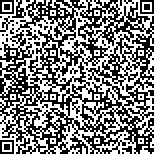下载中心
优秀审稿专家
优秀论文
相关链接
首页 > , Vol. , Issue () : -
摘要

盐沼植被物候的准确监测对“蓝碳”生态系统碳循环研究至关重要。高时空分辨率的卫星遥感技术使得精细化的植被物候监测成为可能,但同时也不可避免地存在“椒盐噪声”。本研究以黄河口湿地为研究区,结合高时空分辨率遥感数据和面向对象方法,开展滨海盐沼物候监测研究。首先基于吉林一号影像进行多尺度分割,提取盐沼植被对象。随后以对象为基本单元,基于时序PlanetScope影像,采用S-G滤波、Double-logistic模型以及动态阈值法提取物候参数,获得生长季开始日期(SOS)、生长季结束日期(EOS)以及生长季长度(LOS),并从时序NDVI拟合精度、物候参数提取结果的空间异质性以及与物候相机观测的一致性三方面开展结果评价。结果表明:(1)相比像元尺度,基于对象的时序NDVI拟合均方根误差(RMSE)、平均绝对误差(MAE)、以及平均绝对百分比误差(MAPE)均较低,RMSE<0.05、MAPE<15%和MAE<0.035的区域面积分别增加了11.46%、12.93%和10.72%,表明基于对象的时序NDVI拟合精度更高。(2)基于对象和基于像元的物候参数提取结果在空间分布上较为一致,二者都能体现盐沼植被物候的空间异质性,但基于对象的物候参数在空间上更为平滑,有效缓解了像元级物候参数在小尺度上的变异性。利用半方差函数量化局部物候参数的空间异质性,发现基于对象的物候参数所得的块金值(C_0)和偏基台值(C)明显低于基于像元的物候参数所得的结果。(3)基于对象的物候参数与物候相机获取的物候参数具有较高的一致性(SOS一致,EOS、LOS仅相差一天),而对象内像元的物候参数存在较大的差异。本研究表明,面向对象的影像分析方法有效降低了高分辨率遥感影像带来的椒盐噪声,在盐沼湿地高分辨率物候提取方面具有良好的应用潜力。
关键词:
盐沼湿地 物候 吉林一号 PlanetScope 高分辨率Accurate monitoring of salt marsh vegetation phenology is essential for studying the carbon cycle in "blue carbon" ecosystems. High spatio-temporal resolution satellite remote sensing technology enables detailed monitoring of vegetation phenology; however, "salt-and-pepper" noise is an inevitable challenge. This study focuses on the Yellow River Estuary Wetland and combines high-resolution remote sensing data with object-oriented methods to investigate coastal salt marsh phenology. First, multi-scale segmentation is applied to Jilin-1 images to extract salt marsh vegetation objects, which are then used for basic units for phenological parameter extraction. Based on time-series NDVI from PlanetScope images, S-G filtering, the Double-Logistic model and dynamic thresholding methods are then used to extract phenological parameters, including the start date of the growing season (SOS), end date (EOS), and length of the growing season (LOS). The results are assessed from three aspects: (1) the fitting accuracy of the time-series NDVI, (2) the spatial heterogeneity of the extracted phenological parameters, and (3) consistency with observations from a phenological camera. The findings indicate: (1) Compared to pixel-based approaches, the object-based time-series NDVI fitting achieves lower root mean square error (RMSE), mean absolute error (MAE), and mean absolute percentage error (MAPE). Specifically, the area with RMSE < 0.05, MAPE < 15%, and MAE < 0.035 increased by 11.46%, 12.93%, and 10.72%, respectively, demonstrating improved fitting accuracy at the object scale. (2) the extracted phenological parameters are similar for both object- and pixel-based approaches, with both capturing the spatial heterogeneity of salt marsh vegetation phenology. However, object-based parameters are spatially smoother, mitigating the small-scale variability observed in pixel-level phenological parameters. Analysis of spatial heterogeneity through semi-variogram functions reveals that the nugget (C_0) and partial sill (C) values for object-based parameters are significantly lower than those for pixel-based parameters. (3) Object-based phenological parameters show a high degree of consistency with those obtained from the phenological camera (with SOS matching exactly, and EOS and LOS differing by only one day), whereas pixel-level parameters exhibit more variations. This study demonstrates that object-oriented image analysis effectively reduces salt-and-pepper noise in high-resolution remote sensing images and shows strong potential for high-resolution phenology extraction in salt marsh wetlands.

